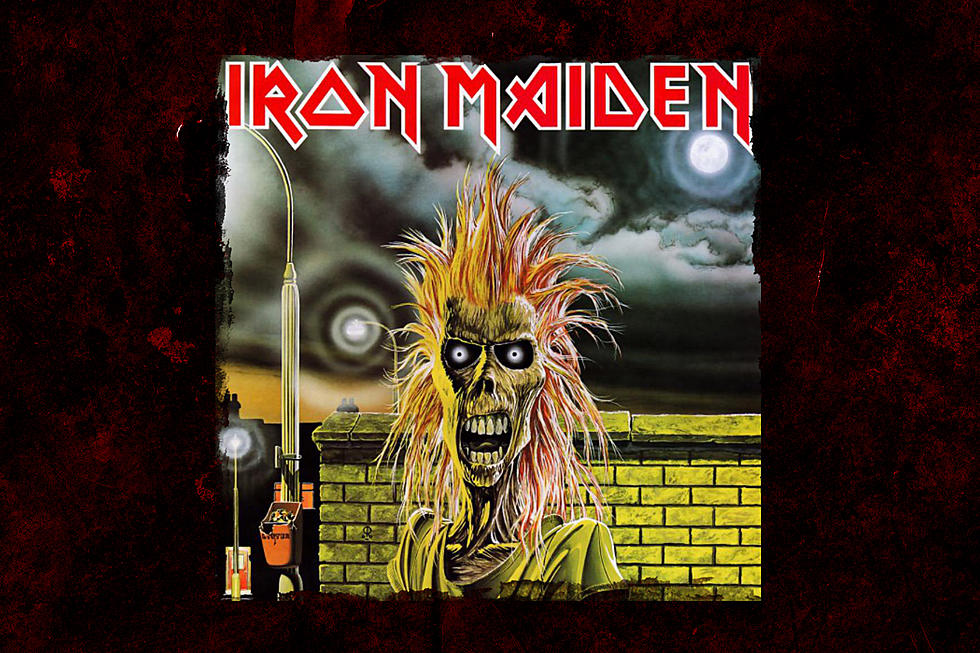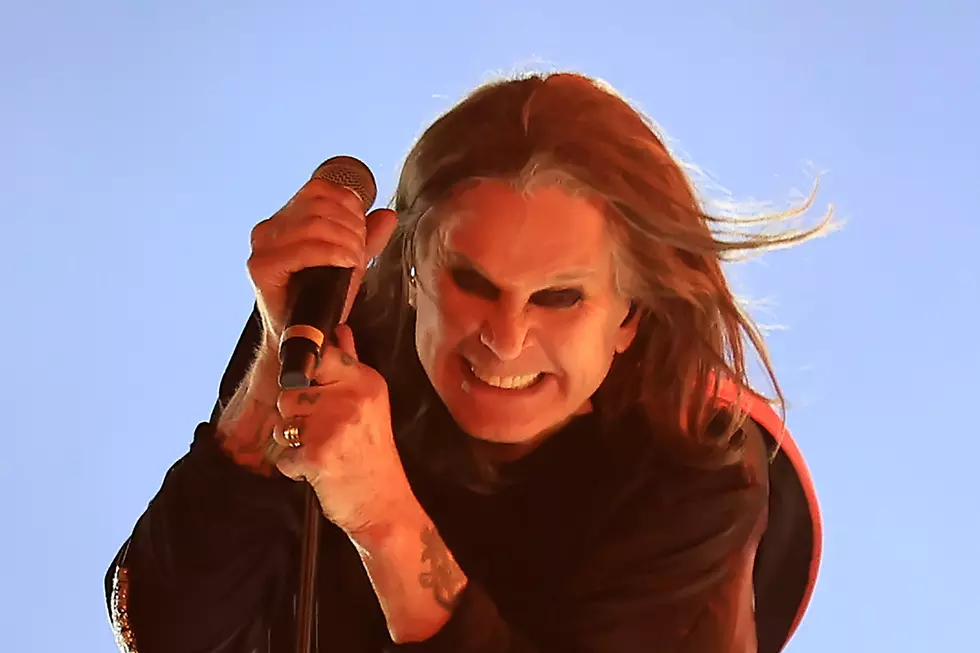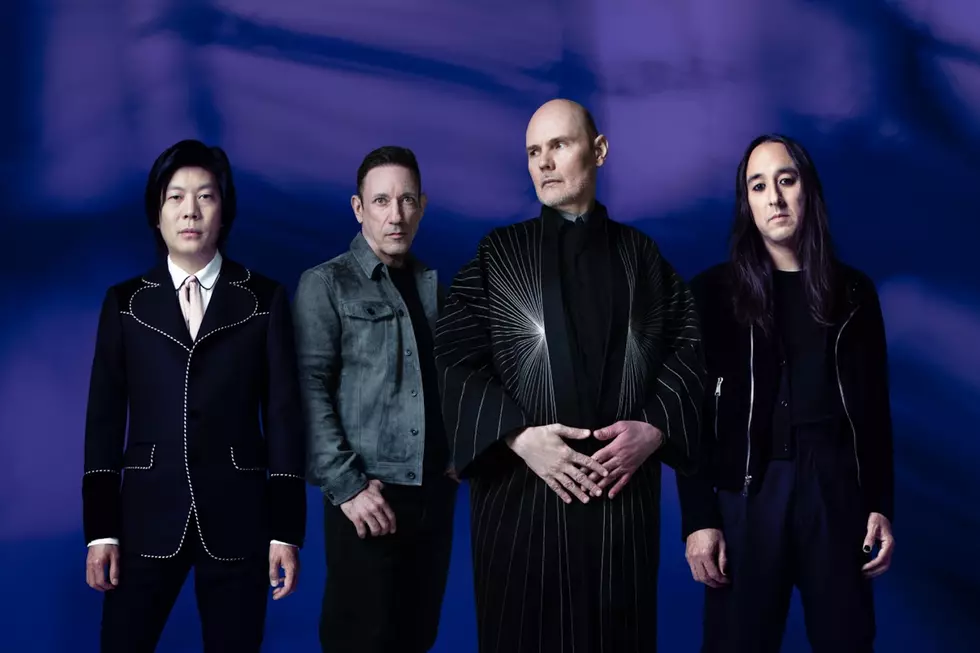
42 Years Ago: Iron Maiden Unleash Their Influential Debut Album
It’s an indisputable fact that Iron Maiden are one of the biggest and most influential metal bands of all time. Yet there continues to be a vocal division between those who think Paul Di’Anno, who performed on the first two albums, was the band’s best vocalist or if that honor should be bestowed to Bruce Dickinson, who sang on most of the other records. What it comes down to is a matter of taste.
The band’s self-titled debut album, which came out on April 14, 1980, clearly demonstrates the differences between the two singers. Di’Anno had far more limited vocal range, but a more raw, abrasive style that makes songs like “Running Free,” “Charlotte the Harlot” and especially the title track punchy and punk-tinged.
“I came from more of a punk background than a rock background,” says Di’Anno. “I didn’t even know who Iron Maiden were back then. Then a friend of mine told me about them. At first I didn’t know what to think, but their music grew on me.”
Iron Maiden were different than other bands from the nascent New Wave of British Heavy Metal scene. Even though Saxon, Def Leppard and Diamond Head were also stirring the pot at a London Club The Soundhouse, Maiden had a level of musicality that was a cut above the other bands, and the combination of galloping riffs, ear-fetching guitar harmonies and complex arrangements made Iron Maiden instantly jaw-dropping.
“The only ones doing anything slightly different were us and Motorhead, ” Di’Anno says. “But Motorhead had been around for years and everyone know what they were like, they just didn’t know what to call them – punk, metal, whatever. People could tell we were a new kind of metal and they came to check us out. And a lot of them welt, ‘Wow, this is fantastic.'”
There was no lack of material for the record, which was filled with a variety of punky stormers anthems and complex, rhythmic sound labyrinths. There was even a classic instrumental, “Transylvania.” Right from the start, the aggression and attitude of “Prowler” — which starts with a killer serrated riff, a memorable wah-wah-saturated lick and some fiery lead work even before the vocals star — demonstrated that Iron Maiden would be a showcase of blazing guitars to rival anything by Judas Priest.
And that was even before Adrian Smith joined the band (guitar duties on Iron Maiden were shared between Dave Murray and Dennis Stratton, who quit to join Lionheart in October 1980).
Iron Maiden, "Prowler"
Even so, then, as now, the driving force of Iron Maiden’s sound was bassist Steve Harris, who wrote or co-wrote all of the songs and lyrics; Di’Anno only contributed to the lyrics of “Remember Tomorrow” and “Running Free.”
Over the next year, the unbalanced division of lyric labor would become a sticking point between Di’Anno and Harris, but when Iron Maiden recorded their debut album, everyone was excited to be in the studio and had a positive attitude about the entire creative process.
Maiden knew most of the songs before it inked a deal with Harvest/Capitol records, and recorded the album at Kingsway Studios in West London in a mere 13 days in January 1980; they mixed at Morgan Studios in Northwest London in February.
After firing the two other producers, the record was produced by Will Malone, who reportedly lacked an interest in the band and allowed Iron Maiden to set their own labels and record much of the record on their own. Some have praised the unpolished, punk-ish sound of the record, but even Di’Anno feels like Iron Maiden suffered from mediocre production.
“If Iron Maiden actually had a better production, I don’t think there’d be another album around to touch it for 1,000 years,” he says. “The guy who produced it mixed the triangle on the fucking Mike Oldfield album and that’s about all he ever did. But we were so naïve, we didn’t know what we was doing.”
Iron Maiden Live at Ruskin Arms in 1980 — Full Set
For the public, Iron Maiden was a tremendous first glimpse at a band that would continue to evolve over time, but would, at the core, remain a band in the NWOBHM tradition. The album also offered a first glimpse at the artwork of Derek Riggs and band’s mascot Eddie.
Iron Maiden’s management discovered Riggs, who brought his portfolio to their studio with the hope of commissioning some of his work. The original Eddie painting was called “Electric Matthew Says Hello,” and featured a hairless Eddie designed for a punk album. The band liked it, but wanted it to look more touch, so Riggs added wild, untamed long hair to the painting, and the immortal Eddie was born.
Loudwire contributor Jon Wiederhorn is the author of Raising Hell: Backstage Tales From the Lives of Metal Legends, co-author of Louder Than Hell: The Definitive Oral History of Metal, as well as the co-author of Scott Ian’s autobiography, I’m the Man: The Story of That Guy From Anthrax, and Al Jourgensen’s autobiography, Ministry: The Lost Gospels According to Al Jourgensen and the Agnostic Front book My Riot! Grit, Guts and Glory.
Every Iron Maiden Song Ranked
More From 95 Rock










